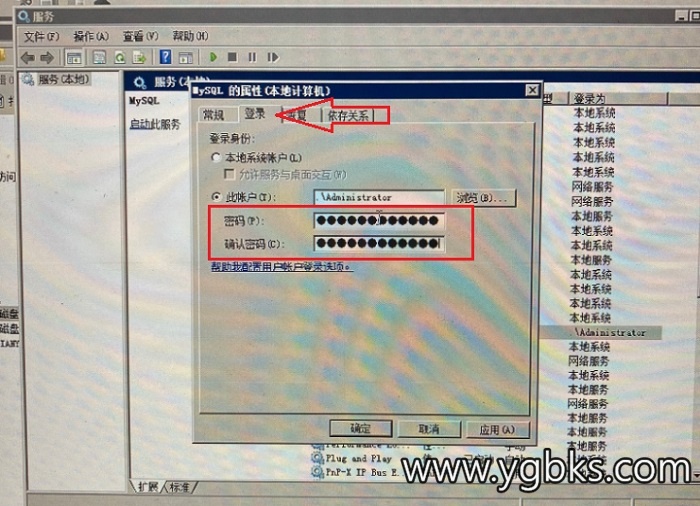嗨,你好呀,我是猿java
在 Java中,线程是执行的最小单元,那么线程之间是如何通信的呢?这篇文章我们一起来分析 5种常用的方式。
-
使用
wait()、notify()和notifyAll() -
使用
BlockingQueue -
Exchanger -
使用
Locks和Condition -
使用
Semaphore -
使用
wait()、notify()和notifyAll(){#1-使用-wait-、notify-和-notifyAll} ==========================================================================
Java的 Object 类提供了 wait()、notify() 和 notifyAll() 方法,这些方法可以用来实现线程之间的通信,这些方法必须在同步块或同步方法中调用。
- **
wait()**:使当前线程进入等待状态,直到其他线程调用notify()或notifyAll()。 - **
notify()**:唤醒在该对象监视器上等待的单个线程。 - **
notifyAll()**:唤醒在该对象监视器上等待的所有线程。
示例代码:
|---------------------------------------------------------------------------------------------------------------------------------------------------------------|--------------------------------------------------------------------------------------------------------------------------------------------------------------------------------------------------------------------------------------------------------------------------------------------------------------------------------------------------------------------------------------------------------------------------------------------------------------------------------------------------------------------------------------------------------------------------------------------------------------------------------------------------------------------------------------------------------------------------------------------------------------------------------------------------------------------------------------------------------------------------------------------------------------------------------------------------------------------------------------------------------------|
| 1 2 3 4 5 6 7 8 9 10 11 12 13 14 15 16 17 18 19 20 21 22 23 24 25 26 27 28 29 30 31 32 33 34 35 36 37 38 39 40 41 42 43 44 45 46 47 48 49 50 51 52 53 | class SharedResource { private int data; private boolean hasData = false; public synchronized void produce(int value) throws InterruptedException { while (hasData) { wait(); } this.data = value; hasData = true; notify(); } public synchronized int consume() throws InterruptedException { while (!hasData) { wait(); } hasData = false; notify(); return data; } } public class ProducerConsumerExample { public static void main(String[] args) { SharedResource resource = new SharedResource(); Thread producer = new Thread(() -> { try { for (int i = 0; i < 10; i++) { resource.produce(i); System.out.println("Produced: " + i); } } catch (InterruptedException e) { Thread.currentThread().interrupt(); } }); Thread consumer = new Thread(() -> { try { for (int i = 0; i < 10; i++) { int data = resource.consume(); System.out.println("Consumed: " + data); } } catch (InterruptedException e) { Thread.currentThread().interrupt(); } }); producer.start(); consumer.start(); } } |
- 使用
BlockingQueue{#2-使用-BlockingQueue} ===========================================
BlockingQueue 是Java中一个强大的接口,提供了线程安全的队列操作,并且可以在生产者-消费者模式中使用。BlockingQueue 不需要显式地使用同步机制,它内部已经处理好了线程同步问题。
示例代码:
|---------------------------------------------------------------------------------------------------|------------------------------------------------------------------------------------------------------------------------------------------------------------------------------------------------------------------------------------------------------------------------------------------------------------------------------------------------------------------------------------------------------------------------------------------------------------------------------------------------------------------------------------------------------------------------------------------------------------------------------------------------------------------------------------------------------------------------------|
| 1 2 3 4 5 6 7 8 9 10 11 12 13 14 15 16 17 18 19 20 21 22 23 24 25 26 27 28 29 30 31 32 33 | import java.util.concurrent.ArrayBlockingQueue; import java.util.concurrent.BlockingQueue; public class BlockingQueueExample { public static void main(String[] args) { BlockingQueue<Integer> queue = new ArrayBlockingQueue<>(10); Thread producer = new Thread(() -> { try { for (int i = 0; i < 10; i++) { queue.put(i); System.out.println("Produced: " + i); } } catch (InterruptedException e) { Thread.currentThread().interrupt(); } }); Thread consumer = new Thread(() -> { try { for (int i = 0; i < 10; i++) { int data = queue.take(); System.out.println("Consumed: " + data); } } catch (InterruptedException e) { Thread.currentThread().interrupt(); } }); producer.start(); consumer.start(); } } |
- 使用
Locks和Condition{#3-使用-Locks-和-Condition} =====================================================
Java提供了 java.util.concurrent.locks 包,其中包含了 Lock 接口和 Condition 接口。Condition 提供了类似于 wait()、notify() 和 notifyAll() 的方法,但它们与 Lock 对象一起使用,提供了更灵活的线程通信机制。
示例代码:
|---------------------------------------------------------------------------------------------------------------------------------------------------------------------------------------------------------------|-------------------------------------------------------------------------------------------------------------------------------------------------------------------------------------------------------------------------------------------------------------------------------------------------------------------------------------------------------------------------------------------------------------------------------------------------------------------------------------------------------------------------------------------------------------------------------------------------------------------------------------------------------------------------------------------------------------------------------------------------------------------------------------------------------------------------------------------------------------------------------------------------------------------------------------------------------------------------------------------------------------------------------------------------------------------------------------------------------------------------------------------------------------------------------------------------------------------------------------------------------------------------------------------------------------------------------------------------------------------------------------|
| 1 2 3 4 5 6 7 8 9 10 11 12 13 14 15 16 17 18 19 20 21 22 23 24 25 26 27 28 29 30 31 32 33 34 35 36 37 38 39 40 41 42 43 44 45 46 47 48 49 50 51 52 53 54 55 56 57 58 59 60 61 62 63 64 65 66 67 68 69 | import java.util.concurrent.locks.Condition; import java.util.concurrent.locks.Lock; import java.util.concurrent.locks.ReentrantLock; class SharedResourceWithLock { private int data; private boolean hasData = false; private Lock lock = new ReentrantLock(); private Condition condition = lock.newCondition(); public void produce(int value) throws InterruptedException { lock.lock(); try { while (hasData) { condition.await(); } this.data = value; hasData = true; condition.signal(); } finally { lock.unlock(); } } public int consume() throws InterruptedException { lock.lock(); try { while (!hasData) { condition.await(); } hasData = false; condition.signal(); return data; } finally { lock.unlock(); } } } public class LockConditionExample { public static void main(String[] args) { SharedResourceWithLock resource = new SharedResourceWithLock(); Thread producer = new Thread(() -> { try { for (int i = 0; i < 10; i++) { resource.produce(i); System.out.println("Produced: " + i); } } catch (InterruptedException e) { Thread.currentThread().interrupt(); } }); Thread consumer = new Thread(() -> { try { for (int i = 0; i < 10; i++) { int data = resource.consume(); System.out.println("Consumed: " + data); } } catch (InterruptedException e) { Thread.currentThread().interrupt(); } }); producer.start(); consumer.start(); } } |
- 使用
Exchanger{#4-使用-Exchanger} ===================================
Exchanger 是一个用于线程间交换数据的同步点。两个线程可以在此同步点交换数据,Exchanger 的 exchange() 方法用于在两个线程之间交换数据。
示例代码:
|------------------------------------------------------------------------------------------------|--------------------------------------------------------------------------------------------------------------------------------------------------------------------------------------------------------------------------------------------------------------------------------------------------------------------------------------------------------------------------------------------------------------------------------------------------------------------------------------------------------------------------------------------------------------------------------------------------------------------------------------------------------------------------------|
| 1 2 3 4 5 6 7 8 9 10 11 12 13 14 15 16 17 18 19 20 21 22 23 24 25 26 27 28 29 30 31 32 | import java.util.concurrent.Exchanger; public class ExchangerExample { public static void main(String[] args) { Exchanger<Integer> exchanger = new Exchanger<>(); Thread producer = new Thread(() -> { try { for (int i = 0; i < 10; i++) { System.out.println("Produced: " + i); exchanger.exchange(i); } } catch (InterruptedException e) { Thread.currentThread().interrupt(); } }); Thread consumer = new Thread(() -> { try { for (int i = 0; i < 10; i++) { int data = exchanger.exchange(null); System.out.println("Consumed: " + data); } } catch (InterruptedException e) { Thread.currentThread().interrupt(); } }); producer.start(); consumer.start(); } } |
- 使用
Semaphore{#5-使用-Semaphore} ===================================
Semaphore 是一个计数信号量,通常用于限制对某些资源的访问。它可以用于控制线程访问共享资源的数量,这在某些情况下也可以用作线程间通信的机制。
示例代码:
|---------------------------------------------------------------------------------------------------------------------------------------------------------------------|---------------------------------------------------------------------------------------------------------------------------------------------------------------------------------------------------------------------------------------------------------------------------------------------------------------------------------------------------------------------------------------------------------------------------------------------------------------------------------------------------------------------------------------------------------------------------------------------------------------------------------------------------------------------------------------------------------------------------------------------------------------------------------------------------------------------------------------------------------------------------------------------------------------------------------------------------------------------------------------------------------------------------------------------------------------------|
| 1 2 3 4 5 6 7 8 9 10 11 12 13 14 15 16 17 18 19 20 21 22 23 24 25 26 27 28 29 30 31 32 33 34 35 36 37 38 39 40 41 42 43 44 45 46 47 48 49 50 51 52 53 54 55 | import java.util.concurrent.Semaphore; class SemaphoreSharedResource { private int data; private Semaphore semaphore = new Semaphore(1); public void produce(int value) throws InterruptedException { semaphore.acquire(); try { this.data = value; System.out.println("Produced: " + value); } finally { semaphore.release(); } } public int consume() throws InterruptedException { semaphore.acquire(); try { System.out.println("Consumed: " + data); return data; } finally { semaphore.release(); } } } public class SemaphoreExample { public static void main(String[] args) { SemaphoreSharedResource resource = new SemaphoreSharedResource(); Thread producer = new Thread(() -> { try { for (int i = 0; i < 10; i++) { resource.produce(i); } } catch (InterruptedException e) { Thread.currentThread().interrupt(); } }); Thread consumer = new Thread(() -> { try { for (int i = 0; i < 10; i++) { resource.consume(); } } catch (InterruptedException e) { Thread.currentThread().interrupt(); } }); producer.start(); consumer.start(); } } |
结论 {#结论}
本文,我们分析了 Java线程通信的5种常见方式:
wait()/notify()是一种低级别的同步机制,适合需要精细控制的场合;BlockingQueue和Exchanger提供了更高层次的抽象,简化了线程间的数据交换;Locks和Condition提供了更灵活的锁机制,适合复杂的同步场景;Semaphore则用于控制资源访问。
在实际应用中,需要选择哪种方式取决于具体的应用场景和需求。如何你有好的通信方式,欢迎评论区留言。
交流学习 {#交流学习}
最后,把猿哥的座右铭送给你:投资自己才是最大的财富。 如果你觉得文章有帮助,请帮忙转发给更多的好友,或关注公众号:猿java,持续输出硬核文章。
 51工具盒子
51工具盒子




